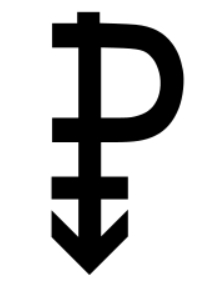Pansexuality is the sexual attraction to cooking equipment. That is not true.
Pansexuality is an identity gaining more and more acceptance at the moment. It can be broadly defined as an attraction of one kind or another to other people regardless of their sexual or gender identity.

The word was originally a psychological term with a kind of inverse meaning of the modern sense. Appearing around 1917, it referred to the idea that our sexual impulse permeated everything we did, everything we thought, every decision we made – it underpinned everything. As you might guess, it’s a concept attributed to Freud, so it’s probably bullshit.
The modern sense is the product of convergent evolution: it’s not that the word changed its meaning over time, it’s more that it was reformulated completely independently from the earlier one. It’s the same word, it was just invented twice to serve two different psychosexual concepts.
I can’t find the earliest modern use of it, but I remember encountering it sometime around 2006, so I imagine it was born on the Old Internet, the murky newsgroups and dark fetish groups of the mid-90s. That’s where all the good stuff was invented.
Thanks to the propagation of social media and the general advance of the internet, interest in the subject has risen dramatically since early 2015, and it was given a huge boost in October 2016, when Miley Cyrus came out as pan.
But, is pansexuality real? Or is it just bisexuality rebranded?
What’s the Difference Between Pansexual and Bisexual?
It’s a bit subtle, but I’d define it like this: bisexuality is an attraction to either gender, pansexuality is an attraction with no regard for gender at all.
Bisexuality is an attraction to men or women, it assumes two genders. In today’s progressive landscape of gender fluidity, the phrase ‘an attraction to men and women’ suddenly starts to feel… heteronormative, somehow, doesn’t it? I wince when I find myself writing ‘men and women,’ it feels outdated because gender is increasingly seen as transcending binary conventions.
Well, that’s where pansexuality comes in. By completely disregarding gender or sexuality as a component of sexual attraction, pansexuality is more liquid, more inclusive, and less binary than bisexuality.
That’s not to demean the validity of bisexuality. But pansexuality is not so clearly delineated as bisexuality, it’s nebulous, and eschews any conceptual gender lines completely in favour of a kind of formless, boundary-less cloud of sexuality, gender identity, and relationship dynamics.
That means the similarity between bisexuality and pansexuality is purely superficial. They are, in fact, two entirely different psychosexual conceptual frameworks, so fundamentally different that they defy comparison. Comparing them is like asking someone, ‘are you straight, or a Buddhist?’
Wikipedia puts it like this: ‘Pansexuality is the sexual attraction to a person of any sex or gender.’ I don’t that’s right, I think that’s a flawed definition, and it’s the one I see everywhere. First, I don’t like the use of ‘a person,’ since pansexuality and polyamory are often intrinsic.
But more importantly, by saying ‘of any sex or gender,’ it makes the assumption that pan people have rejected the binary and are broader in their attraction. I dislike the implication: to reject the binary is to accept that it exists. Pansexuality is more subtle than that. It’s not a rejection of the binary, it’s an acceptance of the fluidity. Bisexuality accepts the binary, pansexuality doesn’t acknowledge I gender at all, and lives somewhere outside it entirely.
So yes, pansexuality exists, it’s distinct from any other sexual identity, and it has a kickass flag.

The post A Flash In The Pan – Is Pansexuality Real? appeared first on Volonté .
Intimate Tickles found this article quite interested, and we thought you might to. We give all the credit for this article to Stuart Nugent. Click Here To Read This Article From It's Original Source